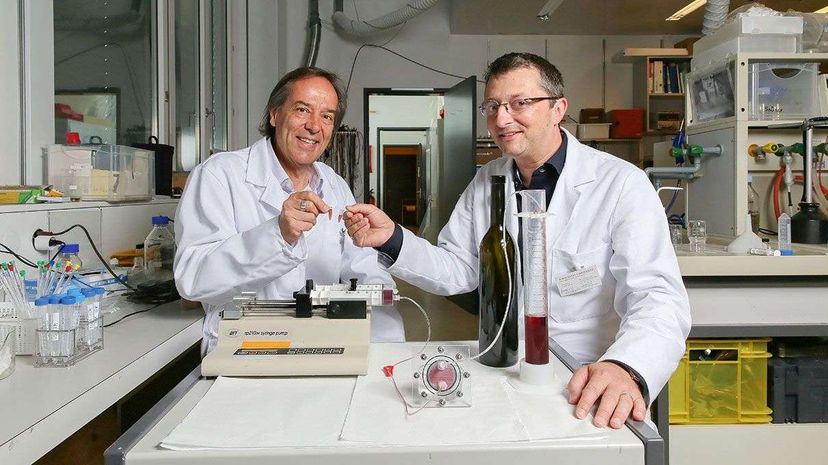
It sounds like a wine-lover's dream: an almost instant transformation of grape juice into wine, and flowing nonstop. So where can you get this, you ask? And how soon?
It's the brainchild of Daniel Attinger, a professor at Iowa State University, who invented a "micro winery." This is a device to help winemakers create a better product by improving the fermentation process. And yes, it does allow for continuous production of wine, but since it's only producing 1 milliliter per hour, it better be nonstop. The typical glass of wine is 150 milliliters (5 ounces)!
Advertisement
The usual fermentation process consists of adding yeast to a barrel of grape juice and waiting seven to 21 days for nature to take its course. But since different yeasts give wine different flavors, experimentation is a time-consuming endeavor. Climate change also plays a role in fermentation. "Due to the heat, some crops ripen too quickly, the harvest takes place sooner and the wines end up with a higher alcohol content or a different taste," Attinger says in a press statement.
So he came up with a tiny device that has compartments. The main compartment has a channel for the grape juice to flow through. An adjacent compartment has the yeast and a thin membrane with holes, rather like a tea bag, allows the yeast to feed into the main compartment. Because the yeast is confined to a small space, the fermentation process happens in just an hour. Alcohol is given off through the membrane. Due to the compartmentalized sections, the process can be repeated easily with different yeasts or different temperatures, allowing fast experimentation.
"Let's say a winemaker in the Lavaux region of Switzerland finds that a certain type of yeast or a certain fermentation temperature leads to an overly bitter wine," says Attinger. "We could quickly test alternatives."
Will DIY winemakers be able to enjoy the, ahem, fruits of this labor soon? Maybe some day, but not yet. "That's more of a gimmick," says Philippe Renaud, the head of École Polytechnique Fédérale de Lausanne's Microsystems Laboratory in Switzerland, which collaborated with Attinger on developing the device. "It uses a simplified process and the result is currently not as good as normal wine," he says in a press statement.
We can only hope that these experimenters step up their game on the home version of this research tool pronto.
Advertisement
